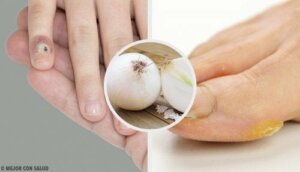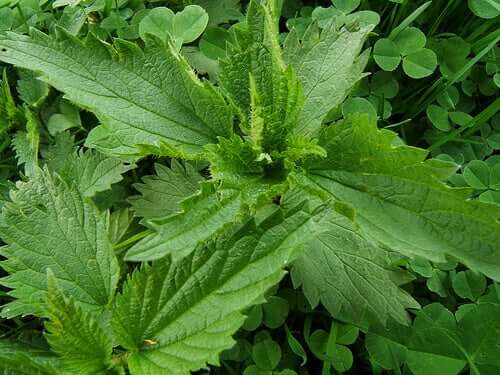How to Remove Calluses from Hands and Feet Naturally


Reviewed and approved by Doctor Carlos Fabián Avila
Removing calluses from hands and feet naturally is the goal of many people. These are a common aesthetic problem that, although they don’t usually lead to major complications, they do harm the image.
Calluses are merely thickened layers of skin. They generally occur as a result of rubbing and friction, such as when we wear new or very tight shoes.
While it’s true that, when it comes to removing them, the best thing to do is to go to a podiatrist. However, there are some tricks you can do to get rid of them and get back to having healthy and beautiful hands and feet.
Take note of the following tips that we’re going to tell you so you can take them into account if you have calluses on your feet. So, let’s get to it!
1. Chamomile bath, an option to eliminate calluses
Find a container where you can submerge the area of your hand or foot that’s affected by a callus. Add some boiling water and chamomile flowers to the container. Once the liquid cools to a bearable temperature, soak the affected area for 10 minutes. This will loosen your callus so you can remove it with the help of a pumice stone.
2. Natural acids
Slice a lemon and apply the slices to the affected areas with a sterilized cloth to hold them in place. The acids from this citrus fruit will help remove your calluses.
Citric acid also acts as a kind of natural skin exfoliant. It’ll help remove dead skin cells and make your skin look smooth and healthy again.
Keep in mind this remedy will take a little longer than the first method. Therefore, we recommend leaving it on overnight.
Learn about The Best Alternatives to Get Rid of Annoying Foot Calluses
3. Water and baking soda mix to remove calluses
To remove calluses, we suggest you prepare a paste made from warm water and a little baking soda.
You should only use three teaspoons of baking soda for every one cup of water. Once you have the desired consistency, apply it to the calluses like a paste. Leave it on for a few minutes, and then rinse the area.
Note: there are people who, instead of baking soda and water, use a paste made with pulverized aspirin and a little water or honey to remove calluses from their feet.
Learn how to make these Five Natural Remedies for Calluses
4. Garlic ointment
If you have some garlic and olive oil at home, you can make an ointment to treat this problem naturally.
Take a garlic clove and mash it with some olive oil to create a homemade treatment. Just as with the lemon slices, this takes more time to take effect, so you should leave it on overnight.
5. Onion
Onion is a food that has anti-inflammatory properties, so it’s great if you’re suffering from calluses. Rubbing it on the skin is supposed to remove the dead cells and therefore the callus.
It’ll take some time to see improvements, but if you have patience you’ll notice the results.
6. White vinegar
Vinegar is an acidic liquid that, according to popular beliefs, could be used to deal with calluses on hands and feet. In particular, because it’s considered that it may help soften the hardened skin.
Mix some white vinegar with water and moisten the callus with it. Cover the area overnight. In the morning, use a pumice stone to remove the softened callus. Then, clean the affected area with soap and water.
7. Nettle

When to see a doctor
If, despite natural treatment, the callus doesn’t subside, it hurts, it grows, and in general, you fear that it could be something else, go to the doctor so that she or he can diagnose and determine whether you may have a cyst or a wart. Otherwise, an x-ray image can help reveal if the abnormality is deeper.
Among the actions that the professional can undertake are:
- Reduce the thickened skin with a scalpel.
- Prescribe the application of salicylic acid.
- Perform surgery.
It’s worth noting that in a study on referrals from general practitioners to dermatologists, an error of 52.1% was established in the diagnosis of verruca vulgaris, which was actually soft fibromas in 26.5% and intradermal nevi in 10.9%. Another frequent error was recorded in the diagnosis of lipomas, with a 46.2% error when confused with epidermal cysts.
Learn how to prevent calluses and forget about the discomfort
You can follow some simple tips to prevent these unwanted visitors from appearing. For example, apply moisturizer regularly all over your body, with emphasis on areas that are more prone to dryness, such as your elbows, knees, and feet.
When you buy shoes, for example, make sure they’re not too tight. It might not seem like they’re too tight at the time, but they’ll eventually start to affect the skin.
At the same time, you should avoid wearing unsuitable footwear (uncomfortable, hard, hot, tight, etc.) so that the calluses on your feet don’t get worse and new ones don’t appear. As for your hands, it’s the same, but in relation to gloves.
Because calluses can also appear on the hands, it’s important to keep this area constantly hydrated. To do this, use moisturizing creams and gloves while you wash the dishes since dish soap tends to dry out your hands.
All cited sources were thoroughly reviewed by our team to ensure their quality, reliability, currency, and validity. The bibliography of this article was considered reliable and of academic or scientific accuracy.
- Berardinelli, J. M. T., & Sampayo, H. I. C. (2005). Remisiones de médicos generales a dermatólogos. Revista de la Asociación Colombiana de Dermatología y Cirugía Dermatológica, 13(2), 116-120. https://revista.asocolderma.org.co/index.php/asocolderma/article/download/522/481
- Jiménez, S. G. Cuidado de pies y manos en la edad adulta. Disponible en: https://www.elfarmaceutico.es/uploads/s1/18/64/ef554-especial-cuidado-pies.pdf
- Marrassini, C., & Anesini, C. A. (2018). Urtica Urens: una planta medicinal Argentina. Disponible en: https://ri.conicet.gov.ar/handle/11336/87427
- Pérez-López, E. (2019). Ácido salicílico: una hormona vegetal que nos ha ahorrado más que un dolor de cabeza. Revista de Biología Tropical, Blog-Blog. https://revistas.ucr.ac.cr/index.php/rbt/article/view/39590
This text is provided for informational purposes only and does not replace consultation with a professional. If in doubt, consult your specialist.








